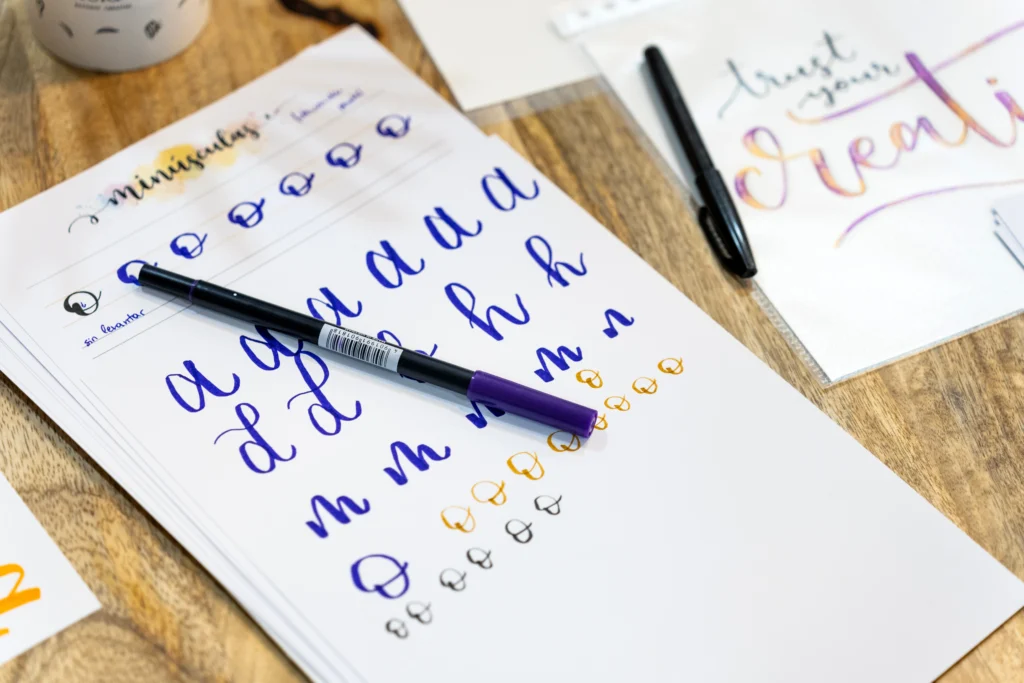
Handwriting fonts have been a staple in the world of design, offering a personal touch that digital fonts often lack. Whether you’re creating a logo, designing a greeting card, or looking to add a personal flair to your website, handwriting fonts provide a unique and authentic appeal. But with so many options available, it can be overwhelming to decide which handwriting font is the best for your project. In this article, we’ll dive into popular handwriting fonts, exploring their characteristics, best use cases, and how to choose the right one for your design needs.
Handwriting fonts are digital typefaces that mimic the natural look of human handwriting. They can range from neat and professional to messy and quirky, depending on the style you’re looking for. These fonts are designed to replicate the variations in letterforms, spacing, and slant that you might see in actual handwriting, offering a sense of warmth and personality that digital fonts often lack.
Now, let’s explore some of the most popular handwriting fonts that designers use regularly. We’ll look at the characteristics of each, along with the types of projects they’re best suited for.
Pacifico is a bold, cursive-style font with a friendly, flowing design. It has a playful and casual vibe, which makes it great for projects aimed at younger audiences or those looking for a cheerful, informal aesthetic.
Brush Script is one of the most iconic handwriting fonts, featuring a slanted, brushstroke style. It is often used to evoke a sense of nostalgia and has been a go-to font in advertising for decades.
Dancing Script is a lively and friendly script font with an upbeat personality. The rounded, bouncy letters make it a versatile choice for a variety of projects where a casual, approachable tone is desired.
Allura is an elegant script font that offers a more sophisticated and polished look than many other handwriting fonts. It is ideal for projects that require a touch of refinement, without sacrificing the personal feel of handwriting.
Indie Flower is a casual, handwritten font with a slightly messy appearance. It’s a perfect choice for designs that need to evoke a sense of individuality and creativity.
When choosing a handwriting font, it’s important to consider the tone of your project and the audience you want to reach. Here are some tips to help you make the right decision:
Each handwriting font carries a different personality. Some fonts feel formal and sophisticated, while others feel casual or quirky. Think about the message you want to convey with your design and match it with the appropriate handwriting style. For instance, Allura would be perfect for a luxury brand, while Indie Flower would be a better fit for a personal blog or creative portfolio.
Handwriting fonts can sometimes be difficult to read, especially if the design is overly decorative or cursive. Make sure that the font you choose is legible at various sizes. Test how the font looks in different applications (e.g., on a business card, website, or poster) to ensure it’s easy to read in all contexts.
Handwriting fonts often work best when paired with simple, clean sans-serif or serif fonts. The contrast between the organic, flowing style of handwriting fonts and the more structured appearance of other fonts creates a dynamic balance that’s visually pleasing. For example, you can pair Pacifico with a simple sans-serif font like Helvetica or Arial to keep the design from becoming too cluttered.
Let’s look at a few examples of how brands successfully incorporate handwriting fonts into their visual identities:
The Coca-Cola brand is known for its iconic script font, which has been a hallmark of the brand for over a century. The flowing, handwritten design evokes a sense of tradition and nostalgia, which is integral to Coca-Cola’s brand identity.
Hallmark’s greeting card designs often feature handwritten fonts that give each card a personal touch. Their use of cursive handwriting in their logo and designs helps convey warmth, thoughtfulness, and connection, which are key attributes of the brand.
Airbnb uses handwritten-style fonts in many of their marketing materials, creating a welcoming and friendly atmosphere. Their use of handwritten fonts in casual messages and advertisements makes the brand feel more human and approachable, which is essential for a service based on community and trust.
Handwriting fonts are more than just decorative elements; they are powerful tools in the design world that can convey personality, authenticity, and emotional appeal. Whether you’re working on a personal project or a brand identity, the right handwriting font can make a significant impact on the way your design is perceived. By understanding the different styles of handwriting fonts and knowing how to choose and pair them effectively, you can create designs that feel unique, engaging, and memorable.
Remember to always consider the tone, legibility, and context of your project when selecting a handwriting font. With the right approach, handwriting fonts can elevate your design and help you communicate your message with clarity and personality.